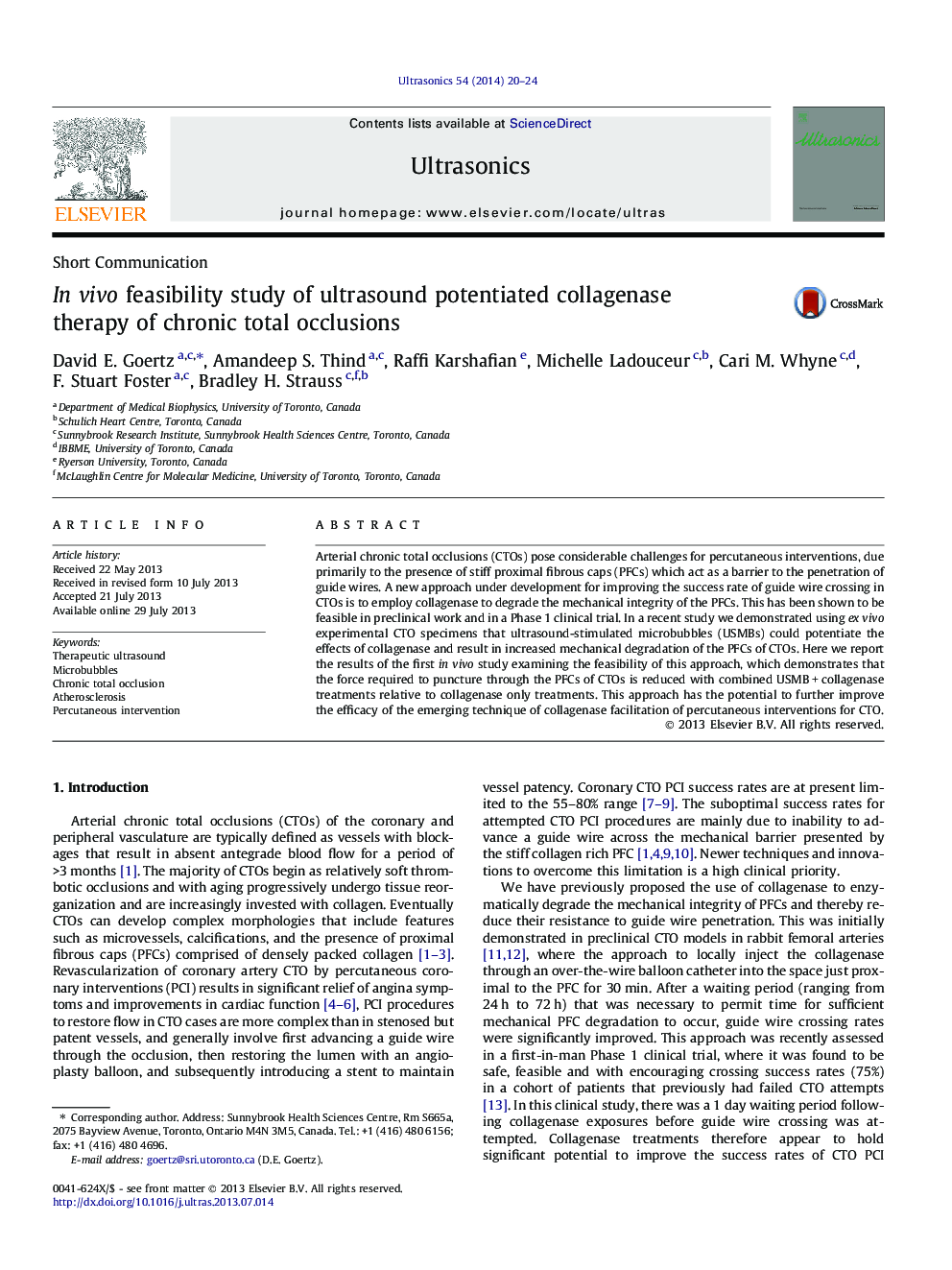| Article ID | Journal | Published Year | Pages | File Type |
|---|---|---|---|---|
| 1758958 | Ultrasonics | 2014 | 5 Pages |
•Developed apparatus for in vivo exposures of chronic total occlusions (CTOs) with ultrasound, microbubbles and collagenase.•First in vivo demonstration that ultrasound and microbubbles combined with collagenase reduces the puncture force for CTOs.•Experiments indicate that these effects were achieved under conditions that produced inertial cavitation of microbubbles.
Arterial chronic total occlusions (CTOs) pose considerable challenges for percutaneous interventions, due primarily to the presence of stiff proximal fibrous caps (PFCs) which act as a barrier to the penetration of guide wires. A new approach under development for improving the success rate of guide wire crossing in CTOs is to employ collagenase to degrade the mechanical integrity of the PFCs. This has been shown to be feasible in preclinical work and in a Phase 1 clinical trial. In a recent study we demonstrated using ex vivo experimental CTO specimens that ultrasound-stimulated microbubbles (USMBs) could potentiate the effects of collagenase and result in increased mechanical degradation of the PFCs of CTOs. Here we report the results of the first in vivo study examining the feasibility of this approach, which demonstrates that the force required to puncture through the PFCs of CTOs is reduced with combined USMB + collagenase treatments relative to collagenase only treatments. This approach has the potential to further improve the efficacy of the emerging technique of collagenase facilitation of percutaneous interventions for CTO.
